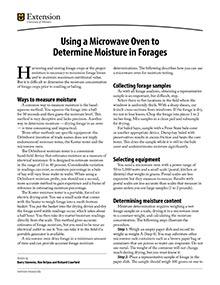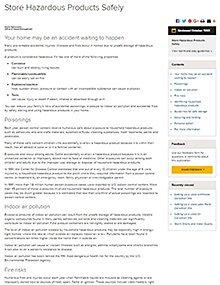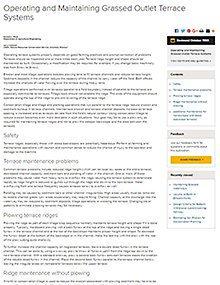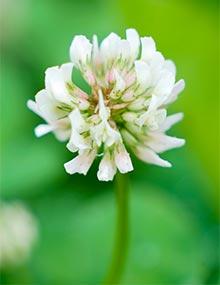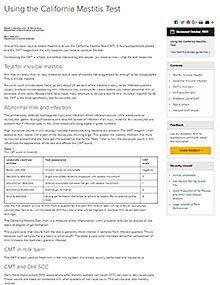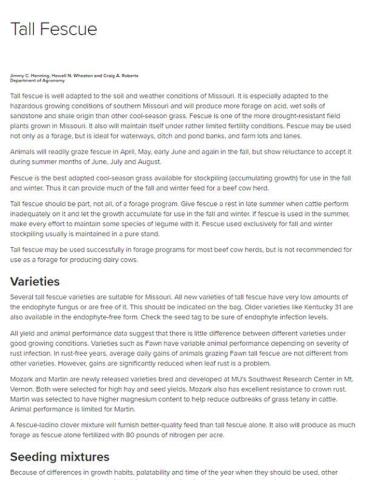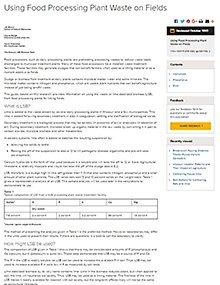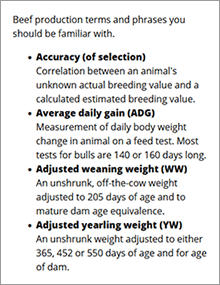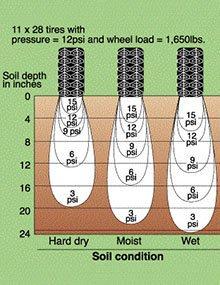Using a Microwave Oven to Determine Moisture in Forages
Reviewed
Harvesting and storing forage crops at the proper moisture is necessary to minimize forage losses and to maintain maximum nutritional value. But it is difficult to determine the moisture concentration of forage crops prior to ensiling or baling.
Kitchens for Workers in Wheelchairs
Reviewed
Space for the wheelchair, plus space for turning the chair are the two important factors to consider when planning a new kitchen, remodeling a structure or adapting one being used.
The standard model wheelchair (measurements taken from American Standard specifications) falls within the following limits:
Working With Resource People
Reviewed
Resource people can and should play a vital role in changing communities. City governments, community institutions, organizations and groups are often confronted with issues that make special knowledge and assistance a must in forming intelligent decisions.
Store Hazardous Products Safely
Reviewed
Your home may be an accident waiting to happenMany preventable accidents, injuries, illnesses and fires occur in homes due to unsafe storage of hazardous products.
A product is considered hazardous if it has one of more of the following properties:

Barley
Reviewed
Winter and spring barleys are available, but testing in Missouri indicates spring barley does poorly. Plus, six-row barleys have higher yield potential than two-row barleys in Missouri. Therefore, this publication covers only the six-row winter barleys.
Wheat Silage for Dairy Cattle
Reviewed
Corn Silage
Reviewed
Corn silage is a popular forage for ruminant animals because it is high in energy and digestibility. Visit our site to learn more about corn silage.
Simple Home Repairs: Wood Porch Flooring
Reviewed
Wood porches are beautiful, but sometimes boards or planks break or splinter, making them unsafe. Using the following instructions, they can be repaired.
Design Criteria for Canopy and Hood Inlet Spillways
Reviewed
These criteria apply to the design of canopy and hood inlet spillways used as the principal spillway for ponds, irrigation reservoirs, and stabilization structures.
The canopy or hood inlet spillway usually is used in conjunction with an emergency spillway.
The Bluegrasses
Reviewed
White, Ladino and Sweet Clover
Reviewed
White and ladino cloverWhite clover is a stoloniferous plant with a shallow root system. The primary stems of white clover usually die before the second year, and the life of the plant depends upon the stolons and their haphazard roots.

Design Criteria for Debris Basins
Reviewed
Using the California Mastitis Test
Reviewed
One of the best ways to detect mastitis is by using the California Mastitis Test. Visit our website today to learn more.
Tall Fescue
Reviewed
Tall Fescue is one of the more drought-resistant field plants grown in Missouri. Visit our website today to learn more.

Drilled Soybeans in Missouri
Reviewed
Using Food Processing Plant Waste on Fields
Reviewed
Waste, or lime stabilized biomass (LSB), from food processing plants can be used for liming fields. Learn what LSB is, how it can be used, and the soil benefits it provides in this University of Missouri Extension guide.
Renovating Grass Sods With Legumes
Reviewed
Many Missouri pastures have adequate grass stands, but they need legumes. If the soil is capable of growing them, legumes should be established in grass sods. Establishing clovers is cheaper than topdressing the grass with nitrogen.
Intermediate Trail Riding
Reviewed
More and more families are having fun trail riding. This activity is reasonably inexpensive, is non-competitive, and affords relaxation on nature's scenic trails.
Beef Production Glossary: BIF Fact Sheet
Reviewed
This glossary lists terms and phrases beef producers should be familiar with.
Soil Compaction: The Silent Thief
Reviewed
Backgrounding Calves Part 1: Assessing the Opportunity
Reviewed
Backgrounding is the growing of steers & heifers from weaning until they enter the feedlot. Visit our site to learn more about backgrouding calves.
Using Performance Data in Judging Classes: BIF Fact Sheet
Reviewed
Judging contests are an important educational tool. Someday young cattle producers will be faced with selection decisions that affect the profitability of their operations. This guide can be used to train youth interested in modern beef selection practices.1
Buying a Packaged Farm Building
Reviewed
